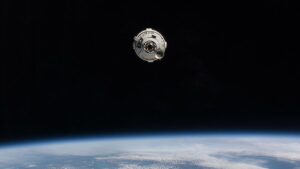Nine astronauts and cosmonauts are living aboard the International Space Station following the arrival of two crewmates aboard Boeing’s Starliner spacecraft for the first time on Thursday. The Expedition 71 crewmates slept in on Friday then split up their day on spacewalk preparations, human research, and Starliner configurations.

Starliner crew members Butch Wilmore and Suni Williams, both veteran NASA astronauts, boarded the orbital outpost after docking the spacecraft to the Harmony module’s forward port at 1:34 p.m. EDT on Thursday. The duo will spend a weeklong mission on the outpost checking out the new spacecraft’s systems and conducting microgravity research.
Wilmore and Williams slept in on Friday before beginning their first full day on the station transferring cargo and emergency gear in and out of Starliner. The Starliner crew will go into the weekend checking out the new vehicle’s docked capabilities and systems.
Meanwhile, a trio of spacewalks are planned this month for science and maintenance on the orbital lab. NASA Flight Engineer Tracy C. Dyson worked throughout Friday reviewing spacewalk procedures and configuring spacewalk tools inside the Quest airlock with assistance from fellow flight engineers Mike Barratt and Jeanette Epps.
Mission managers will discuss the upcoming spacewalks on NASA TV at 4 p.m. EDT on Tuesday, June 11. Watch live on the NASA+ streaming service via the web or the NASA app. Mission coverage also will air live on NASA Television, YouTube, and on the agency’s website. Learn how to stream NASA TV through a variety of platforms including social media.
Barratt also helped the Starliner astronauts unpack new station cargo before servicing life support equipment in the Destiny, Tranquility, and Harmony modules. Epps spent the rest of her day processing blood and saliva samples for the Immunity Assay investigation that is exploring how microgravity affects cellular immunity. NASA Flight Engineer Matthew Dominick assisted the Starliner crew with emergency hardware then wrapped up his day in Tranquility replacing orbital plumbing components.
Roscosmos station Commander Oleg Kononenko started his day getting familiar with the Plasma Crystal-4 space physics experiment that explores low-temperature gas mixtures. Next, he tested a 3D printer’s ability to manufacture hardware in space. Flight Engineers Nikolai Chub and Alexander Grebenkin took turns scanning each other’s stomachs after breakfast to observe how the digestion system adapts to long-term weightlessness. The duo split up afterward and worked the rest of Friday on a variety of life support maintenance throughout the space station’s Roscosmos segment.
